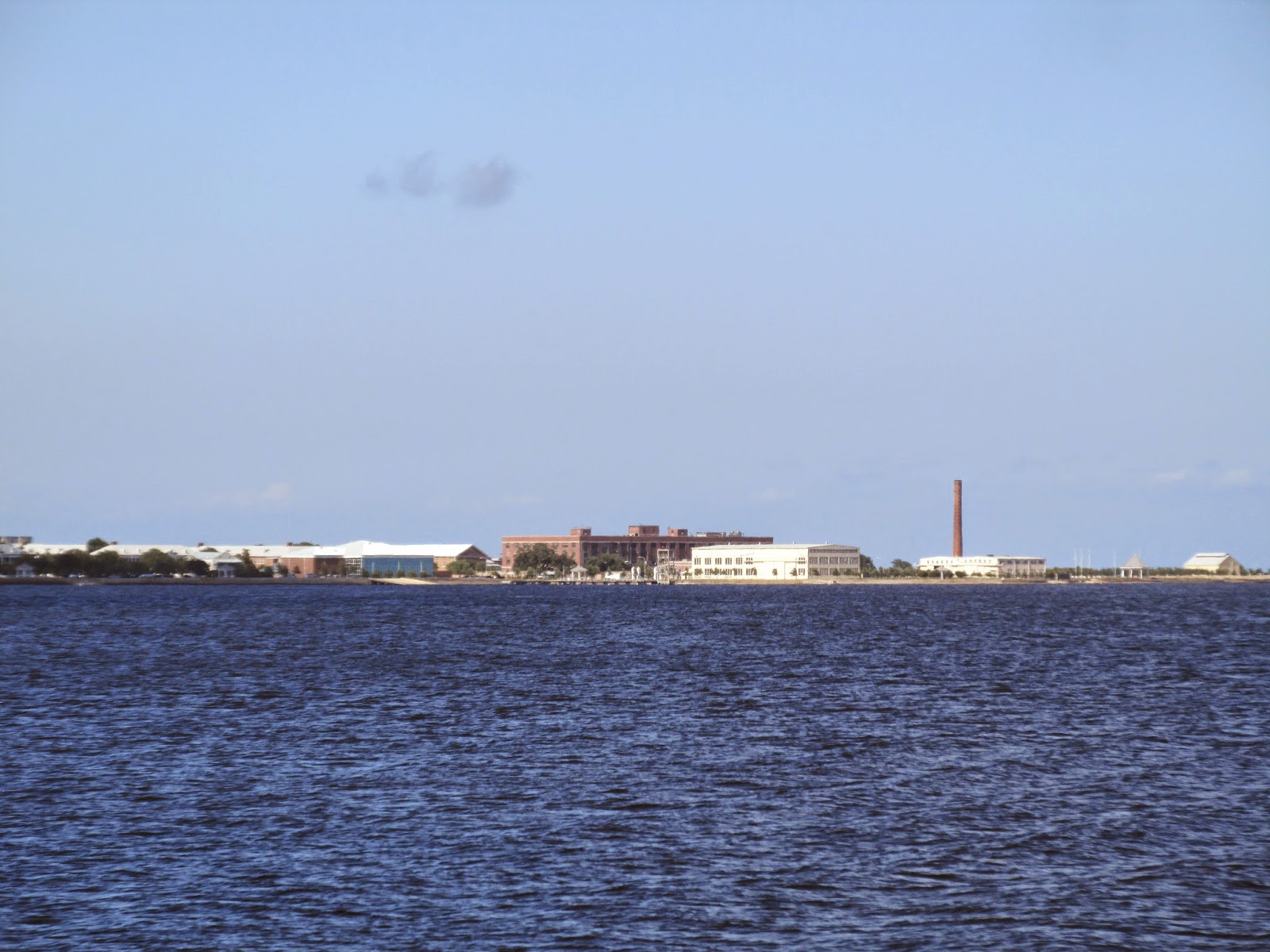While skimming through some of my photos tonight, I found a collection of pictures I had taken during one of our trips through the City of Mobile Alabama. We've been 'through' Mobile several times but never really drove into the City to look around. Jasmine had to be left at the vets for her periodic glucose curve, so we had the day to explore. We decided to simply drive around Mobile, catch some lunch and just enjoy the area. I hope you enjoy looking at the pictures as much as I did taking them.
Let's start with the Bankhead Tunnel. This tunnel allows traffic to proceed to the downtown area under the Mobile River. You may remember seeing it in the movie, "Close Encounters of the Third Kind"...Richard Dreyfus drives through the tunnel while chasing UFOs.
The tunnel itself was built in 1940 at a cost of $4 million. It was constructed in pieces, off site, then floated into position and sunk. The pieces were then connected underwater. When completed, the tunnel was then pumped dry and flood gates installed.
The tunnel is 40' under water to allow ships to pass above it.
Since Mobile is a major shipping port, many barges and container ships navigate the waters of Mobile Bay and the Mobile River carrying many different products. This area was used to off load several types of rock and gravel. The barges can be seen in the picture.
While looking for a place for lunch, we spotted this art deco style building downtown.
We finally settled on a small deli across the street from this beautiful park. Al Fresco dining on a warm summer day is a perfect way to enjoy life.
This fantastic building is the terminal for the Gulf-Mobile and Ohio Railroad. The GM&O was a major player in the railroad business from 1938 to 1972 before finally merging with the Illinois Central Railroad. It had almost 3,000 miles of track.
Besides product, the Mobile River and surrounding area is home to tankers coming to deliver crude oil to be used in nearby refineries. There are many holding tank farms along the river bordering Mobile.
Mobile, Alabama skyline.
Battleship Memorial Park is a military history park and museum located just off I-10 on the western shore of Mobile Bay.
On display are many different types of military aircraft, ships and tanks. It's famous for and named after the battleship USS Alabama, which is on display along with a Gato-Class Submarine, USS Drum.
The USS Alabama was commissioned in 1942 and saw service in World War II in both the Atlantic and Pacific theaters. She was decommissioned in 1947 and assigned to reserve duty. She was officially retired in 1962 and delivered to Mobile Bay in 1964 where she remains as a museum.
The USS Alabama accumulated nine US Navy battle stars for its' service in World War II.
After its' retirement in 1962, an effort by the State of Alabama was begun to save this great battleship from being scrapped. Alabama schoolchildren pitched in change from their lunch monies to raise over $100,000 towards its' preservation, with the remainder of the over $1 million necessary funds coming from corporate sponsors.
The ship was declared a National Historic Landmark in 1986.
In Mobile Bay, a lone fisherman tries his luck to bring home a bounty for his table.
I'm not sure, but I don't believe this puppy can fly. Someone spent a significant amount of time and money putting it together though. It didn't look like it had been moved in quite awhile....





























